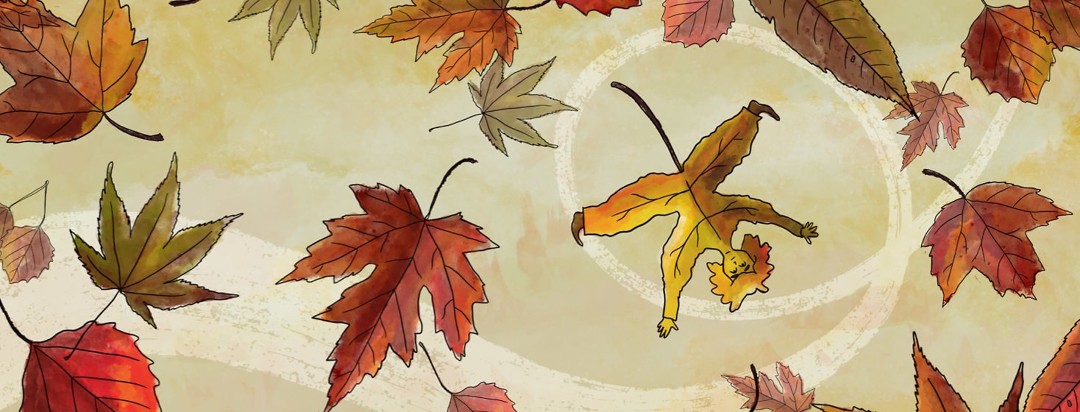Can You Feel the Seasons in Your Joints?
My rheumatoid arthritis is behaving itself for the most part lately, but I have noticed a few things popping up in recent weeks. During a routine follow-up appointment with my rheumatologist last week, I took the opportunity to ask her a few questions.
Weather changes and RA pain
One of my questions related to changes in the weather and normal RA aches and pains. Members of our community have shared how their body acts as a type of barometer that can predict the weather as air pressure rises or falls.
People can feel the seasons change within their bodies.
I haven’t overtly noticed this connection in previous years, but this year the arrival of autumn feels different. The day that the temperatures dropped significantly, my left shoulder began to “scream” its displeasure at it.
A previous experience with shoulder bursitis
Shoulder pain is not a normal part of my RA, but I have experienced bursitis years before I was diagnosed with RA. During that attack, my shoulder was so swollen and immobile that my primary care doctor said it looked as if someone had taken a baseball bat to my shoulder. I assured her that nobody had done such a thing.
The bursitis made it such that I couldn’t lift my arm in any direction under its own power. I could, however, use my right arm to slowly lift my left arm over my head if I needed to. If memory serves, I believe my doctor prescribed anti-inflammatory medication, perhaps including oral corticosteroids, to reduce the pain and swelling.
Fortunately, the inside of my left shoulder has never again tried to escape the confines of my joint.
What was the reason for this shoulder pain?
This year, my shoulder doesn’t look swollen but it has been complaining. I asked my rheumatologist about shoulder pain. I told her that my shoulder was much more achy than usual.
She checked for tenderness or swelling — none detected. She gently checked the movement, crunchiness, and range of motion — it moves fine, particularly if you go slow. I even showed my doctor that I can reach behind my back with my left arm to point to where my shoulder blade felt like it had been poking me from behind.
I can move my arm fine and I have excellent range of my motion in my shoulder when I move carefully. However, my upper spine and shoulder blade do feel like if I could only “pop” them in the right direction, things would free up even more.
Note: As I’m writing this a week after my appointment, I rotate my shoulder out and up to the side (just to see how it feels today) and get a loud “clunk” of a sound. It doesn’t hurt, but I suspect the sound is a tendon crossing over a ridge on a bone. That’s just my guess. My shoulder wasn’t “clunking” last week.
Low air pressure and joint swelling
A 2014 study published in PLoS One suggests a correlation between low air pressure and worsening of joint synovitis (swelling of the fluid inside the joint) in patients with RA.1 I found this information very interesting and congruent with anecdotal reports of people living with RA who talk about changes in their pain that occur when the weather turns.
One possible explanation the researchers provide:1
...[higher] air pressure directly presses joint structures in patients with RA. Low air pressure results in reduced outside pressure of joints which allow joints to be swollen more easily. Enlarged space of joints would allow more inflammatory cells to enter joint space and produce inflammatory cytokines.
Shoulder exercises and physical therapy
My rheumatologist asked me whether I was doing anything unusual to put pressure on my shoulders. I did admit that maybe I might sometimes grip my handlebars a little too tightly as I cycle. That could explain some muscle tension imbalances, but it doesn’t explain a sudden change in pain coinciding with the cold weather.
She asked if I wanted to try physical therapy or would I rather try some home exercises first. With the ongoing concern of contracting COVID-19 in public and close spaces, I opted for home exercise first. She printed out several pages of exercises aimed at strengthening the muscles that support the entire structure of the shoulder.
Will the exercises help if the shoulder pain is weather-related?
With the last week I’ve had — very busy without much “me time” — I haven’t yet started the exercises. Of course, I went through the motions on most of them as I checked out what was included, but I haven’t focused on using the exercises daily in an organized fashion to improve my situation.
I anticipate that the exercises will help me feel stronger and the stretching will feel really good. But I’m uncertain as to how much they will reduce the type of pain I’ve felt recently with the colder weather. However, I might be surprised. I’ve got to focus, set aside the time, and at least give it a try.
What’s your experience? Do weather changes cause your RA to tap you on the shoulder to say, “Hey, remember me? I’m still here!”?
Be well,
Lisa
Read my other articles on RheumatoidArthritis.net.

Join the conversation